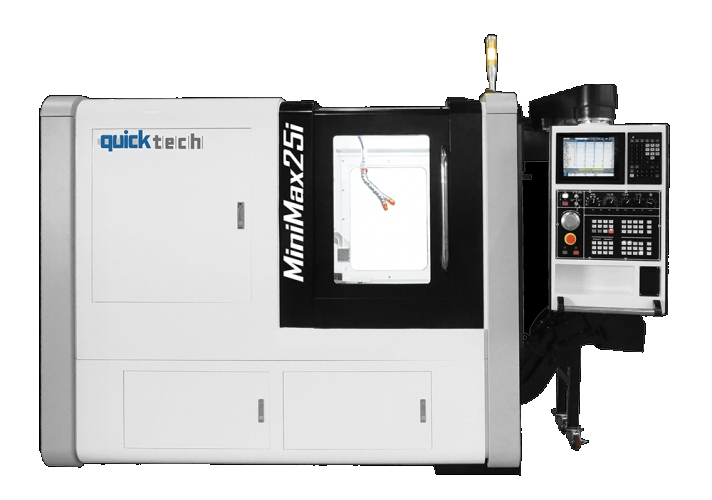

The multifunction lathe is a machine tool that is capable of integrating several processes and machining tasks in the same equipment. In this machine it is possible to carry out different jobs without having to alternate the piece between machines. That is, on the same object and, in a single procedure, turning, milling, drilling, etc. can be carried out.
What is the multifunction lathe?
The main characteristic of this machine is its power to execute different processes simultaneously. In the multifunction lathe, machining can be carried out by turning, milling, drilling, boring, among others, which means a great saving of time in the production lines. Thanks to this machine, a piece does not have to go through different processes using different machines to give it the desired finish.
The multifunction lathe, also called multitask, allows the machining of parts using different axes. It has a double spindle between which it can be alternated to carry out the different machining operations in a single procedure. In this way the part leaves the machine completely finished and ready for delivery.
Numerical control in multitasking lathes
The multifunction lathe works using the alphanumeric language CNC or computerized numerical control. Thanks to this technology, the processes in this machine tool are automatic, which helps to reduce delivery times and also labor, since minimal human intervention is required.
To work with this machine, it is necessary to design the part using CAD and CAM programs and translate them into the CNC language compatible with the multifunction lathe’s computer. Once the operator has inserted the necessary parameters for the machine to work, he will only have to place the piece attached to the main plate, through the clamping or tooling systems of the machine itself.
However, unlike other CNC machine tools, the multifunction lathe requires true design experts, as it is important to know how to combine all the functions of the machine to maximize its performance. In other words, an expert is needed who can program the turning, as well as the milling and the corresponding drilling of the part, if necessary.
Features and benefits of the multifunction lathe
By having cutting tools typical of lathes and milling machines, the multifunction lathe usually includes several plates, clamping systems, tools and tools that have the power and rigidity necessary to be able to work a piece using any machining that is needed. The change between the tools is automatic and it is not necessary to rotate and reposition the piece, since the machine has everything necessary to move it as it is convenient.
The multifunction lathe is also characterized in that the parts that are machined can have complex designs. The results in this machine are perfect: impeccable, precise and high quality finishes. In this machine, the machining time of small parts is reduced to less than one minute, while large parts have long machining processes; however, this allows operators to perform other tasks within the workshop without the need to constantly monitor the multifunction lathe.
We have already anticipated that multiple tasks can be performed on this machine, but which ones specifically? In a multifunction lathe not only can all the processes of turning be carried out, but it can also be milled in three, four or five axes; in addition to drilling. Thanks to this quality, it is said that this type of machine is one of the most flexible and versatile on the market.
In addition, it is possible to work different materials, which increases the versatility of these machines. Thanks to this feature, multitask lathes are present in machining workshops where metals are worked in all their variants: stainless steel, aluminium, iron, etc.; also admits the work of wood and glass. With this lathe, parts for metalworking can be manufactured , in addition to creating works of art for goldsmithing and even making engravings.
Finally, the multifunction lathe is characterized by including a tailstock, depending on the machine model, which allows the automatic collection of the parts so that they can be machined on the other side of the same.
Multifunction lathe parts
The multifunction lathe is made up of a bed, the machine support, on which all the other parts sit. On the bed are the plates (generally more than one) to which the piece is attached using different clamping and tooling systems.
Generally this machine includes two heads (spindle and sub-spindle), in addition to a milling head. As we have already mentioned, thanks to these spindles, the part is automatically transferred from one head to another so that it is subjected to two different machining procedures. In many models of multi-task lathes there is the possibility of including a turret as an additional tool or removing the mill head to add a second turret.
Finally, we must take into account the computer of the machine; without this equipment, the tasks on the lathe would be impossible to perform. In the computer, the operator enters the necessary commands so that the lathe can machine the part.


